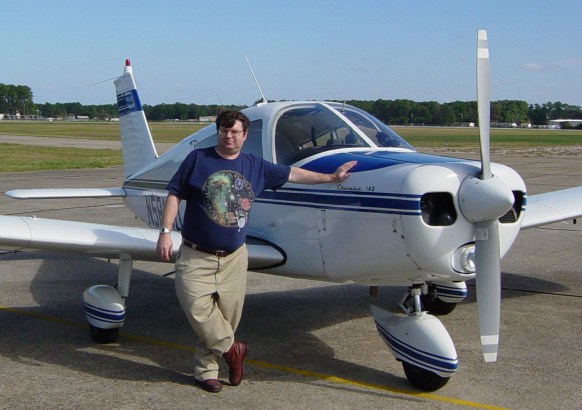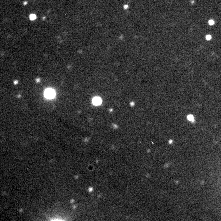
Discovered 1997 Dec. 27 by M. W. Buie at the Anderson Mesa Station of the Lowell Observatory.
Alexander (Andy) F. Lubenow (b. 1956), the program coordinator at the Space Telescope Science Institute, has provided exceptional support to the Hubble Space Telescope as an innovator and expert observation planner, especially for solar system targets, over the lifetime of HST.
Andy was a long-time member of the support staff for the Hubble Space Telescope working at the Space Telescope Science Institute (short bio at STScI). His work was critical to the success of most of the solar system observations carried out on HST. During his career he was responsible for 465 observing programs on HST (though I know that number is low, records are spotty from the first couple of years of operation). As of late 2006, those observations lead to a total of 1041 scientific publications. He was also interested in model trains, sailing, and flying.

This is the discovery image of the asteroid

(it's in the center)
It's easier to see if you watch the sky in motion. Two animations are available. The first shows a short time-lapse movie with the position of the asteroid held constant (1.8Mb). The second shows the same time-span but this time holding the positions of the stars fixed (1.8Mb) while the asteroid moves in the field.
At the time discovery, it was 2.3 AU from the Sun and 1.5 AU from the Earth. Its apparent visual magnitude was about 20.0. If it is an S-type asteroid (this is just a guess, but they're one of the most common types) a typical albedo would be 18% and implies this object is 1.6 km in diameter.
|
Orbital Element |
Value |
|---|---|
|
Mean anomaly |
16.711431 deg |
|
Argument of perihelion |
211.014136 deg |
|
Longitude of the ascending node |
310.941606 deg |
|
Inclination |
5.830999 deg |
|
Eccentricity |
0.035609 |
|
Semi-major axis |
2.348275 AU |
|
Perihelion distance |
2.26 AU |
|
Aphelion distance |
2.43 AU |
|
Orbital period |
3.599 years |
|
Epoch of osculating elements |
2005/09/22 |
Every 1.3 years or so this asteroid is observable from the Earth and peaks in brightness at a visual magnitude between 19 and 19.5. Over the next 20 years, it will reach a minimum distance of 1.28 AU when it reaches its peak brightness of V=19.0